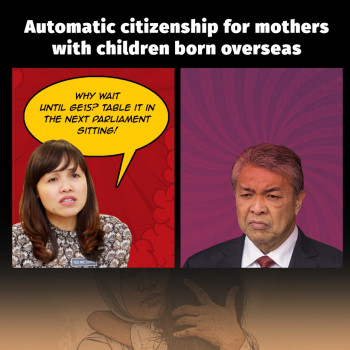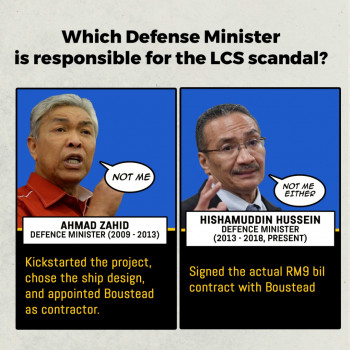 Is your constituency a grasshopper or a giant? Not all votes in Malaysia are created equal. Some constituencies, though home to many voters, muster the combined strength of a grasshopper. While others, despite having fewer voters, command the power of a giant.
Is your constituency a grasshopper or a giant? Not all votes in Malaysia are created equal. Some constituencies, though home to many voters, muster the combined strength of a grasshopper. While others, despite having fewer voters, command the power of a giant.
Excessive differences in electorate size (known as malapportionment) is diminishing the value of your vote!
It’s no coincidence that many traditionally pro-opposition voting districts have disproportionately large populations as compared to those districts that have habitually supported BN.
For instance, it took 112,224 voters in Kapar to vote PKR’s S. Manikavasagam into parliament in 2008, while UMNO’s Tengku Adnan Tengku Mansor only needed 6,608 voters in Putrajaya to be elected. That makes Kapar 17 times larger than Putrajaya!
Seats do not equal support
Opposition parties may obtain wide support from the electorate, but it translates into only a small number of seats in Parliament.
In 2008, the ruling party managed to win 63% of parliamentary seats (140 out of 222) despite only garnering 51.5% of the popular vote.
In fact, BN’s popular vote actually dipped below 50% in Peninsular Malaysia. However, the 51% popular vote share that the PR coalition won in Peninsular Malaysia was not enough for it to form the federal government.
Gulliver in Lilliput
 Parliament has now become a scene from Gulliver and Lilliput, with ‘grasshopper’ MPs sitting side by side with ‘giants’.
Parliament has now become a scene from Gulliver and Lilliput, with ‘grasshopper’ MPs sitting side by side with ‘giants’.
The 1957 constitution guaranteed that there should not be more than 15% difference between the number of votes in each constituency within a state. Controlling the disparity between the number of voters in constituencies is crucial for the one-man-one-vote system to work.
However, this safeguard has been removed by constitutional amendments pushed through by the ruling party commanding Parliamentary majority.
A 1962 constitutional amendment allowed a maximum of 50% disparity between seats in a state. But in 1973, this limitation was removed altogether.
The question then becomes, is your mandate as a voter being accurately reflected or not?
Rural constituencies over-represented
 Another anomaly is the giant weightage given to rural electorates today which does not reflect the country’s current urban-rural ratio. It is reported that 60% of electoral districts today are “rural” although only 40% of Malaysia’s land is considered rural.
Another anomaly is the giant weightage given to rural electorates today which does not reflect the country’s current urban-rural ratio. It is reported that 60% of electoral districts today are “rural” although only 40% of Malaysia’s land is considered rural.
Effectively, the value of a vote in a rural community is of much greater value than that in an urban constituency.
This is a by-product of laws made half a century ago, which have since been removed.
The 1953 Federal Legislative Council recommended equality of population across voting districts except for rural areas. Having regard to the greater difficulty of contacting voters in rural districts and other inherent disadvantages it faced, the Council decided that a measure of weightage should be given to the rural constituencies.
As the rural areas developed over the decades, Malaysia’s electoral system should increasingly move towards the constitutional principle of equal size constituencies. However, constituency redelineation over the years has not readjusted the urban-rural balance.
The result? Your MP today could be a ‘grasshopper’, and so could your vote! -The Rocket
The giants vs grasshoppers trend is across the board in Selangor
| Giants | Grasshoppers | Difference | ||||
| Sabak Bernam | 31,381 | Datuk Abd Rahman Bakri (UMNO) | Gombak | 99,153 | Azmin Ali (PKR) | 315% |
| Sungai Besar | 34,073 | Noriah Kasnon(UMNO) | Serdang | 94,877 | Teo Nie Ching (DAP) | 278% |
| Tanjung Karang | 36,391 | Datuk Noh Omar(UMNO) | PJ Utara | 76,618 | Tony Pua (DAP) | 210% |
70% of the population does not participate in national elections
52% is ineligible to participate
13% is not registered as voters
10% of registered voters do not cast their vote




